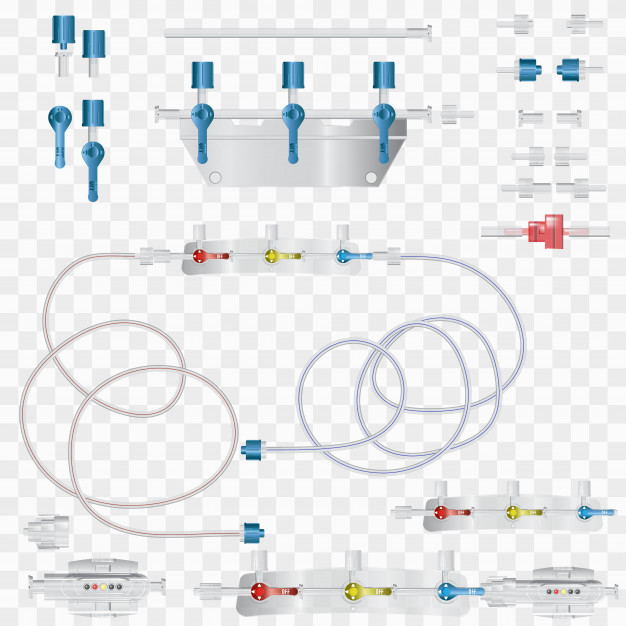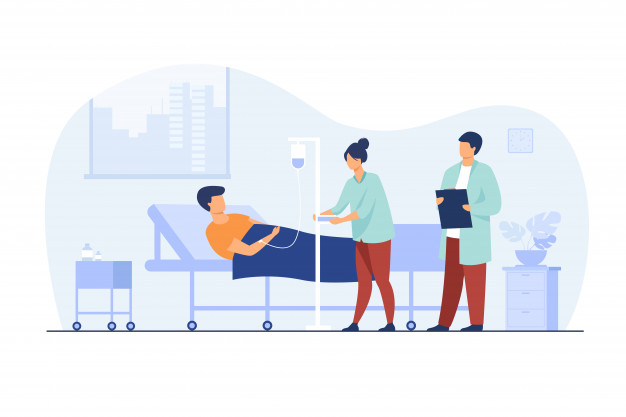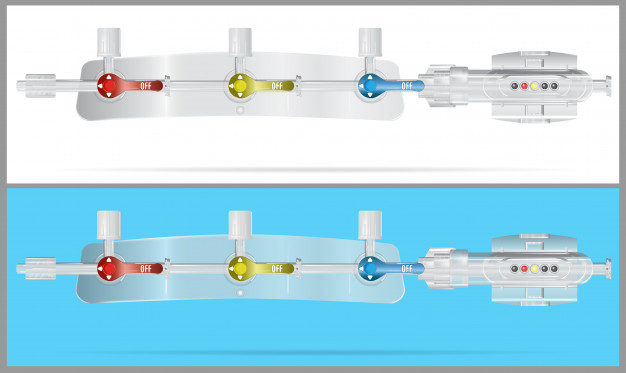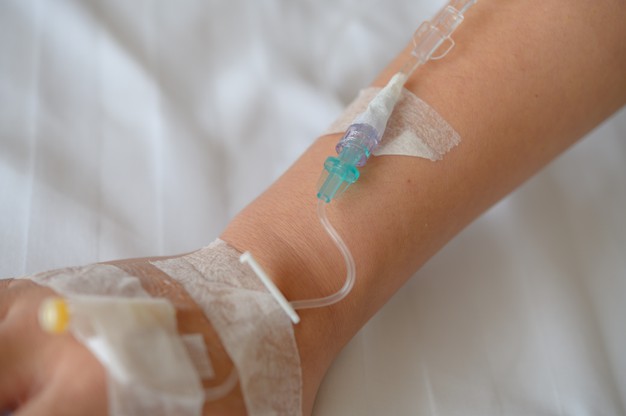Parenteral nutrition is a special feeding technique through which all essential nutrients with required amount are provided directly into the vein of a patient. It is basically dealt with the intravenous administration of isotonic or hypertonic solutions of nutrients via VAD (venous access device) straight into the intravascular fluid for providing proper nutrients to the patient, who is not able to receive optimum nutrition through GI tract.
Types of parenteral nutrition
Parenteral nutrition is of four types, which include –
Total parenteral nutrition (TPN)
It helps to provide all nutrients as per the body’s need through parenteral route. It mainly uses the central vein for administration purpose
Peripheral parenteral nutrition
In this type of parenteral nutrition the nutrients are given through peripheral vein to the patient
Hyperalimentation
In this type of parenteral nutrition, 150% of daily requirements are provided to a patient through parenteral route to generate a positive nitrogen balance for gaining weight
Partial parenteral nutrition
In this type of parenteral feeding, 30 to 50% of daily nutrients requirements are provided through parenteral route, whereas rest portions are provided through enteral route (through tube feeding)


Significance
- It helps to fulfill the need of sick individuals
- It especially helps to provide foods to those individuals, who are unable to chew and swallow
- It mainly helps to bypass the gastrointestinal tract for the patients who are not able to take food orally
- It helps to repair damages
- It mainly helps to meet the need of calories
- It helps to maintain the ability of the body to metabolize nutrients
- It also helps to correct all deficiencies of the body and promotes well being
- It contains all the nutrients in absorbable form as it is administered directly into vein hence the nutrients are readily absorbed and entirely utilized for metabolism
Indications
Cases, which require parenteral nutrition, are listed below –
- When gastrointestinal tract stops functioning
- Major gastrointestinal surgery
- Acute pancreatitis
- Gastro intestinal fistula
- Small bowel ischemia
- Malnutrition (especially which is manifested with 10 to 15% weight reduction)
- Short bowel syndrome
- Malabsorption
- Multi organ system failure
- Intestinal obstruction
- Paralytic ileus
- Inflammatory bowel disease
- Persistent vomiting
- Severe diarrhoea
- Acute renal failure
- Liver failure
- Tumor in gastrointestinal tract
- Multiple fractures
-
 Severe burns
Severe burns - NPO (more than 5 days)
- Metastatic cancer
Composition of parenteral nutrition
Parenteral nutrition provides a combination of fluid, sugar, trace elements, amino acids, electrolytes, vitamins and fats. Generally the nutrients that are present in parenteral formula are listed below –
Carbohydrates
It generally contains glucose (the end product of carbohydrate digestion) and dextrose monohydrate
Proteins
It contains amino acids, especially crystalline amino acids
Fats
It mainly contains emulsified fat. Generally 10% and 20% of fat emulsions are used. It has seen that 10% emulsions are responsible for providing 1.1 kcal per ml whereas 20% emulsions are accountable for providing 2 kcal per ml
Vitamins
It contains all the essential vitamins and especially rich in Vitamin B9 or folic acid, Vitamin B12 and Vitamin K
Minerals
It basically contains copper, zinc, iodine, chromium and magnesium
Water
Water is the main constituent of parenteral nutrition and about 30 to 50 ml of fluid per kg of ideal body weight is required to prepare parenteral formula
Electrolytes
It basically contains sodium, potassium, chlorine, calcium and phosphorus


Total parenteral nutrition (TPN) formula for children
Calories
- It provides 110 to 125 kcal of energy per kg of ideal body weight per day to new born
- Whereas, TPN for older child is associated with providing 100 to 110 kcal of energy per kg of ideal body weight daily
Amino acids
- 2 to 3 g of amino acids are given per kg of ideal body weight per day
- It has seen that one liter of Astymin is responsible for providing about 90g of amino acids thus it often used with routine glucose based maintenance solution
Fats
- Isotonic fat solution is used
- It is mainly used for providing relatively more energy (as calories are provided in concentrated form) with low osmolarity
Carbohydrate
- Hypertonic glucose solution is used. It has seen that 8%, 20%, 25% and 50% solutions are used for supplying energy
- Glucose more than 15% is required for central vein infusion
- It is better to meet about 70% of daily calorie from glucose
- Insulin as well as potassium should also be provided for inhibiting sugar loss in urine
- It should be kept in mind that excessive administration of glucose is not good as it develops various health complications like lipogenesis, liver disorders and increase in CO2 production

Electrolytes
- As mentioned above parenteral formula contains several electrolytes but infant parenteral formula provides 3.5mEq of chloride or sodium or potassium daily
Vitamins and minerals
- All essential vitamins and minerals are provided through this formula with required amount
Total parenteral nutrition (TPN) formula for adults
- It is associated with providing 100ml of solution per hour so 2400ml of solution is given in 24 hours
- It contains 25% of dextrose, which helps to provide 2040 kcal of energy
- Adult TPN formula contains 4% of proteins especially amino acids, which contributes 384 kcal of energy
- It generally contains 10% fat emulsion, which is responsible for providing 550 kcal of energy
- Total calories obtained from adult TPN formula is about 2974 kcal
- Vitamins and minerals are also added to the respective TPN solution as per recommendation
Monitoring of patients while on parenteral nutrition
- General sense of well being should be monitored daily
- Strength of the body should also be monitored regularly, which helps to measure the ability of body for getting out of bed or walking etc
- Body temperature, pulse rate, blood pressure and respiratory rate should be monitored in daily basis
- Body weight should also be monitored daily
- Measurement of head circumference, skin fold thickness and mid upper arm circumference should be done weekly
- Daily fluid intake and fluid out should be monitored
- It is better to monitor the level of glucose, sodium, potassium, chloride and bicarbonate in blood
- Serum concentration of creatinine as well as albumin should be measured twice in a week
- Hemoglobin level, WBC count should also be monitored

Complications
Parenteral nutrition may cause various complications, which include –
- Hyperglycemia, due to excessive glucose contents of fluid as well as inadequate insulin secretion from pancreas
- Hypoglycemia may also develop
- Sepsis due to the contamination of venous access device
- Electrolyte disturbances as a result of some underlying diseases like vomiting or diarrhoea or fistula. It is better to treat the respective underlying diseases at first and also the concentration of electrolytes in TPN formula should be modified when necessary
- Hypervolemia may develop
- Dysfunctions of liver also occurred due to fatty infiltration
- Villous atrophy
- Catheter related cardiac arrhythmia
- Perforation
- Thrombosis
- Osmotic diuresis
- Azotaemia (nitrogen accumulation in blood)
- Weight reduction
- Deficiency or excess of Vitamins may occur
- Deficiency of essential fatty acids may also occur
- Deficiency of trace elements may also seen


Source:
Berger, M.M. and Pichard, C., 2019. Parenteral nutrition in the ICU: Lessons learned over the past few years. Nutrition, 59, pp.188-194.
Jeejeebhoy, K.N., 2018. Total parenteral nutrition in the hospital and at home. CRC Press.
John, J. and Seifi, A., 2017. Total parenteral nutrition usage trends in the United States. Journal of critical care, 40, pp.312-313.
Mitra, A. and Ahn, J., 2017. Liver disease in patients on total parenteral nutrition. Clinics in liver disease, 21(4), pp.687-695.
Patel, P. and Bhatia, J., 2017, February. Total parenteral nutrition for the very low birth weight infant. In Seminars in fetal and neonatal medicine (Vol. 22, No. 1, pp. 2-7). WB Saunders.
Russell, M.K. and Wischmeyer, P.E., 2018. Supplemental parenteral nutrition: review of the literature and current nutrition guidelines. Nutrition in Clinical Practice, 33(3), pp.359-369.
Zasada, I.A., Banner, J. and Bugge, A., 2019. “Nutrition or no nutrition?”: Chylothorax or leakage of total parenteral nutrition?. Forensic Science, Medicine and Pathology, 15(3), pp.470-473.


